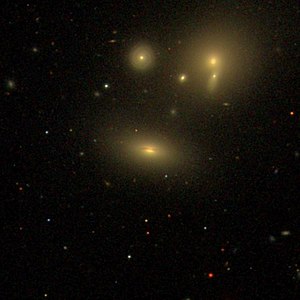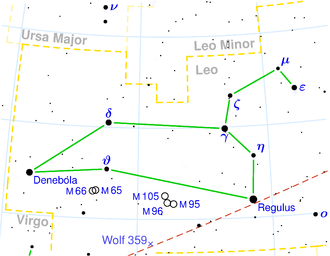NGC 3653
| Galaxy NGC 3653 |
|
|---|---|

|
|
| SDSS image from NGC 3653 | |
| AladinLite | |
| Constellation | lion |
|
Position equinox : J2000.0 , epoch : J2000.0 |
|
| Right ascension | 11 h 22 m 30.1 s |
| declination | + 24 ° 16 ′ 45 ″ |
| Appearance | |
| Morphological type | S0 |
| Brightness (visual) | 13.7 mag |
| Brightness (B-band) | 14.7 mag |
| Angular expansion | 0.6 ′ × 0.4 ′ |
| Position angle | 79 ° |
| Surface brightness | 12.2 mag / arcmin² |
| Physical data | |
| Redshift | 0.029694 ± 0.000067 |
| Radial velocity | (8902 ± 20) km / s |
|
Stroke distance v rad / H 0 |
(396 ± 28) · 10 6 ly (121.4 ± 8.5) Mpc |
| history | |
| discovery | Wilhelm Herschel |
| Discovery date | April 10, 1785 |
| Catalog names | |
| NGC 3653 • PGC 34905 • CGCG 126-044 • MCG + 04-27-029 • 2MASX J11223008 + 2416457 • HCG 51C • GC 2393 • H III 336 • h 872 • HOLM 249B | |
NGC 3653 is a lenticular galaxy of Hubble type S0 in the constellation Leo. It is estimated to be 396 million light years from the Milky Way .
The object was discovered by Wilhelm Herschel on April 10, 1785 .
